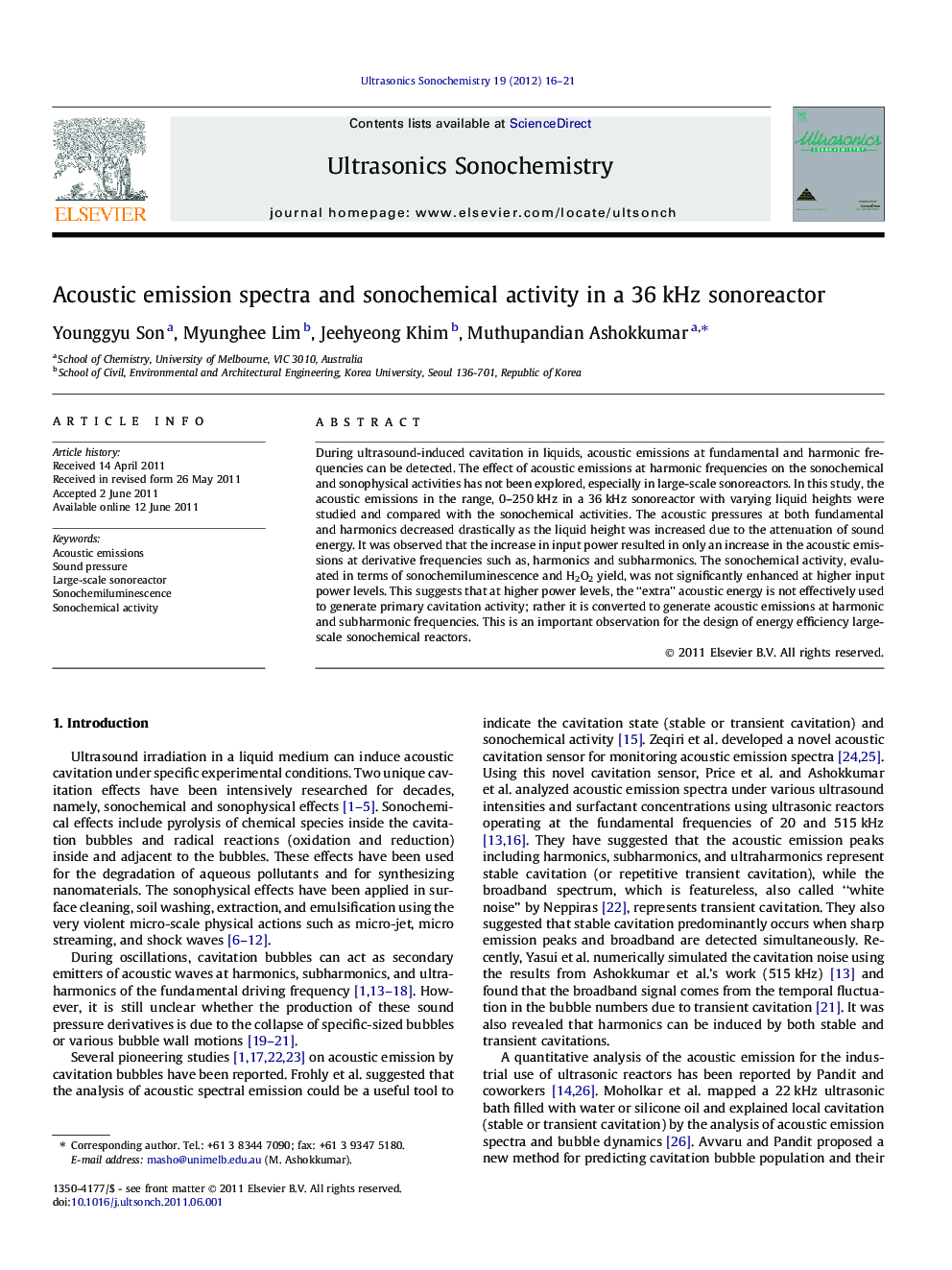| Article ID | Journal | Published Year | Pages | File Type |
|---|---|---|---|---|
| 1270155 | Ultrasonics Sonochemistry | 2012 | 6 Pages |
During ultrasound-induced cavitation in liquids, acoustic emissions at fundamental and harmonic frequencies can be detected. The effect of acoustic emissions at harmonic frequencies on the sonochemical and sonophysical activities has not been explored, especially in large-scale sonoreactors. In this study, the acoustic emissions in the range, 0–250 kHz in a 36 kHz sonoreactor with varying liquid heights were studied and compared with the sonochemical activities. The acoustic pressures at both fundamental and harmonics decreased drastically as the liquid height was increased due to the attenuation of sound energy. It was observed that the increase in input power resulted in only an increase in the acoustic emissions at derivative frequencies such as, harmonics and subharmonics. The sonochemical activity, evaluated in terms of sonochemiluminescence and H2O2 yield, was not significantly enhanced at higher input power levels. This suggests that at higher power levels, the “extra” acoustic energy is not effectively used to generate primary cavitation activity; rather it is converted to generate acoustic emissions at harmonic and subharmonic frequencies. This is an important observation for the design of energy efficiency large-scale sonochemical reactors.
► Acoustic emissions in a 36 kHz sonoreactor were studied and compared with the sonochemical activities. ► An increase in input power resulted in only an increase in the acoustic emissions at derivative frequencies. ► The sonochemical activity was not significantly enhanced at higher input power levels. ► At higher power levels, the “extra” acoustic energy is not effectively used to generate primary cavitation activity. ► This is an important observation for the design of energy efficient large-scale sonochemical reactors.
